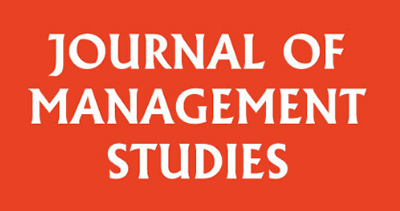
Summary
More than in the past, contemporary society presents a challenge to juggle multiple roles, identities and functions especially in the domains of work and family. In this post, we summarize the results of our research, published in the Journal of Management Studies, that was conducted on the board members of family businesses; an interesting case where executives in top-level positions simultaneously hold relevant roles in the business owning family.
Is it possible to manage multiple role identities?
The answer is: yes, but it’s not simple and the way to manage it varies depending on the intensity of the overlap between the salient roles played. We study the case of family directors who simultaneously play important roles in the company and in the owning family. The demands arising from these roles, and the ensuing behavioral expectations, are pervasive, and often contradictory. Consider, for example, the case of a board member who is simultaneously the company’s CEO, a majority shareholder and the sister of other shareholders. While the decisions taken in a board of directors meeting must be based in the best interests of the business, safeguarding the wellbeing and relationships within the family-business, cannot be disregarded by the directors in multiple roles.
This example, drawing out salient roles such as work, family, and ownership, applies well to many other situations outside the boards of family businesses where people are called upon to fulfil many ‘salient’ yet often conflicting roles at the same time.
How to manage multiple role identities struggles?
Typically, struggles related to multiple role identities emerge with decision making approaches that we label as sailing in bewilderment, and navigating in haze or steering with clarity.
These findings are derived from a unique sample of 36 elite family firm directors who have collectively served on 615 boards with an aggregate 1,447 years’ experience over time, and integrating interview and secondary data with field observations. For more details on how to perform the bridge and task activities see our full paper.
Our research reveals that such struggles can be managed by exploiting the benefits of structural forces i.e., the physical and mental boardroom spaces that “make meetings more formal” and set the ground for group behaviors. These forces include procedural and functioning criteria for meetings, board physical boundaries, and the attachment of symbolic meanings to the boardroom.
Our research also reveals that such structural forces help the directors implement bridging and buffering actions that are particularly useful for managing the many hats they wear in a healthy way.
The buffer task refers to encouraging directors to set identity boundaries (e.g., distinguishing concerns arising from being a family member from those emerging from their role in the business), and think objectively about the multiple roles that might coexist. Buffering efforts are targeted at increasing awareness of the directors’ multiple identities and encouraging their objective distinction, a concept that is consistent with the idea of role separation.
The bridge task refers to piecing together and reconciling the salient multiple role struggles through increasing communication and dialogue to externalize the various preoccupations related to each identity, and negotiating a solution that takes all the role identities into account. Bridging efforts in the boardroom are targeted at ensuring that all the relevant role identities are duly considered in the decision-making process, a concept that resonates with the idea of multiple role alignment.
What is the future for people covering multiple salient roles?
Our study was an interesting adventure because it uncovered the very sensitive issues related to role identity struggles, and the stress of filling several salient roles at the same time.
Although we cannot predict what the future of situations like these will be, we do know that when these situations arise in decision-making contexts, as in the case of family directors, there are techniques and ways to handle them and that the individuals involved can benefit by using an appropriate way to organize meetings (boardroom structural forces), and by working with other directors to perform bridging and buffering actions themselves.

0 Comments